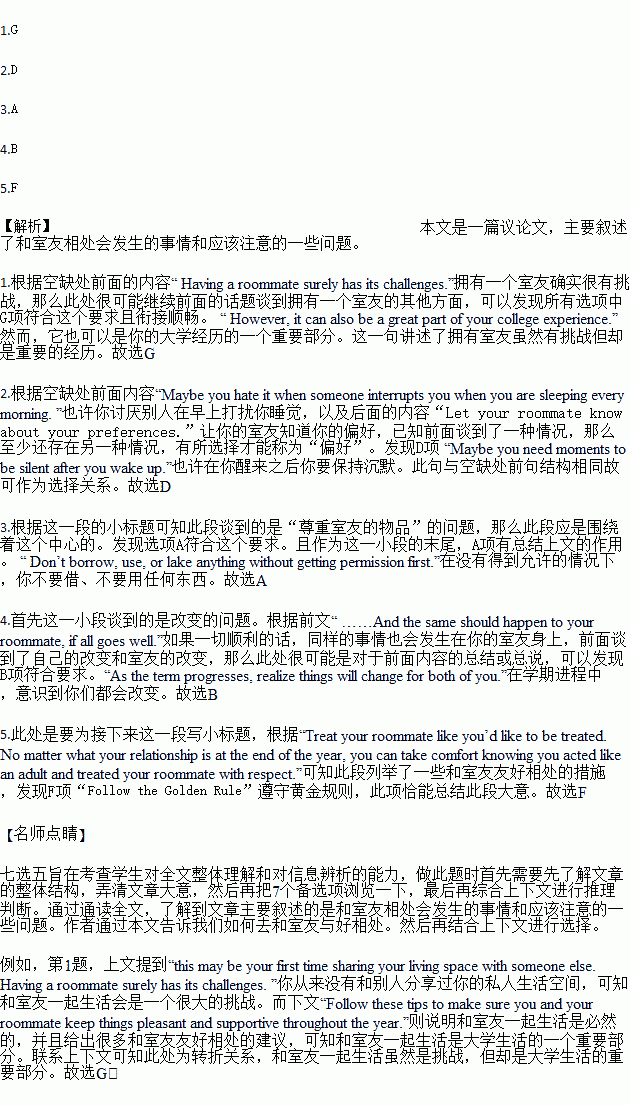题目内容
You may have grown up living with sisters and brothers, or this may be your first time sharing your living space with someone else. Having a roommate surely has its challenges. 1. Follow these tips to make sure you and your roommate keep things pleasant and supportive throughout the year.
Be clear from the beginning.
Maybe you hate it when someone interrupts you when you are sleeping every morning. 2., Let your roommate know about your preferences. It’s not fair to expect him or her to pick up on them right away, and communicating what you need is one of the best ways to get rid of problems before they become problems.
Respect your roommate’s things.
This may seem simple,but it’s probably one of the biggest reasons why roommates experience conflicts. Don’t you think he’ll mind if you borrow his shoes for a quick soccer game for all you know, you just stepped over an uncrossable line.3.
Be open to change.
You should expect to learn and grow and change during your time at school. And the same should happen to your roommate, if all goes well. 4.. Be comfortable addressing things that unexpectedly come up, setting new rules, and being flexible to your changing environment.
5.
Treat your roommate like you’d like to be treated. No matter what your relationship is at the end of the year, you can take comfort knowing you acted like an adult and treated your roommate with respect.
A. Don’t borrow, use, or lake anything without getting permission first.
B. As the term progresses, realize things will change for both of you.
C. Getting along well with a roommate is really a difficult job.
D. Maybe you need moments to be silent after you wake up.
E. You should correct your bad habits first.
F. Follow the Golden Rule.
G. However, it can also be a great part of your college experience.

